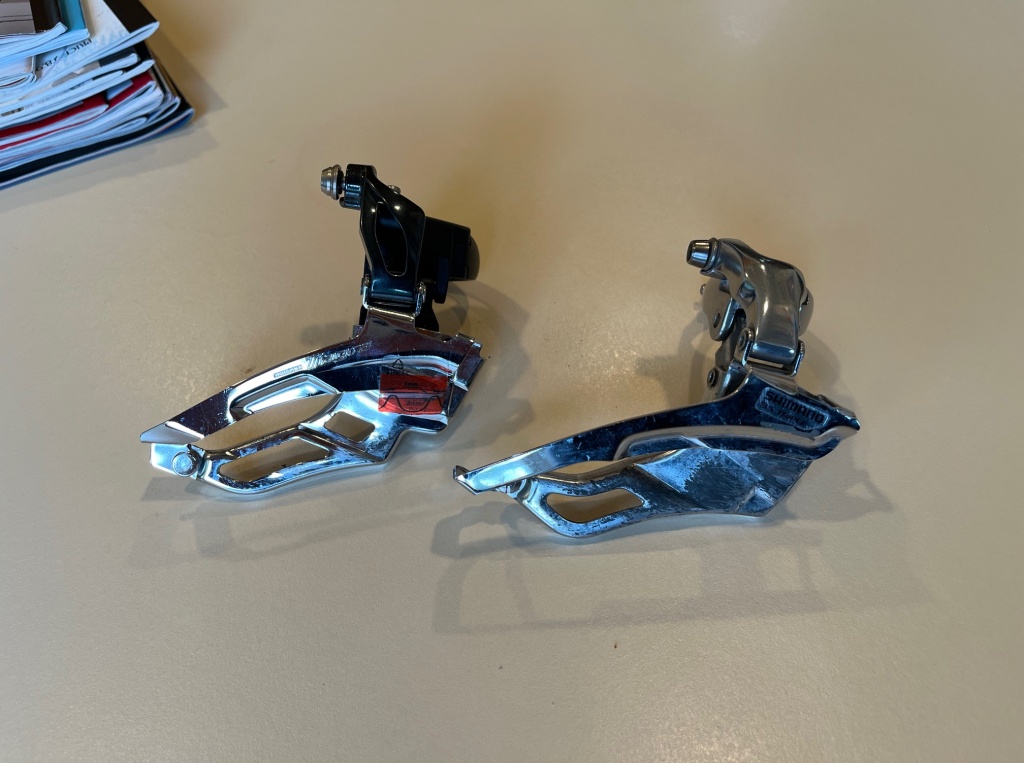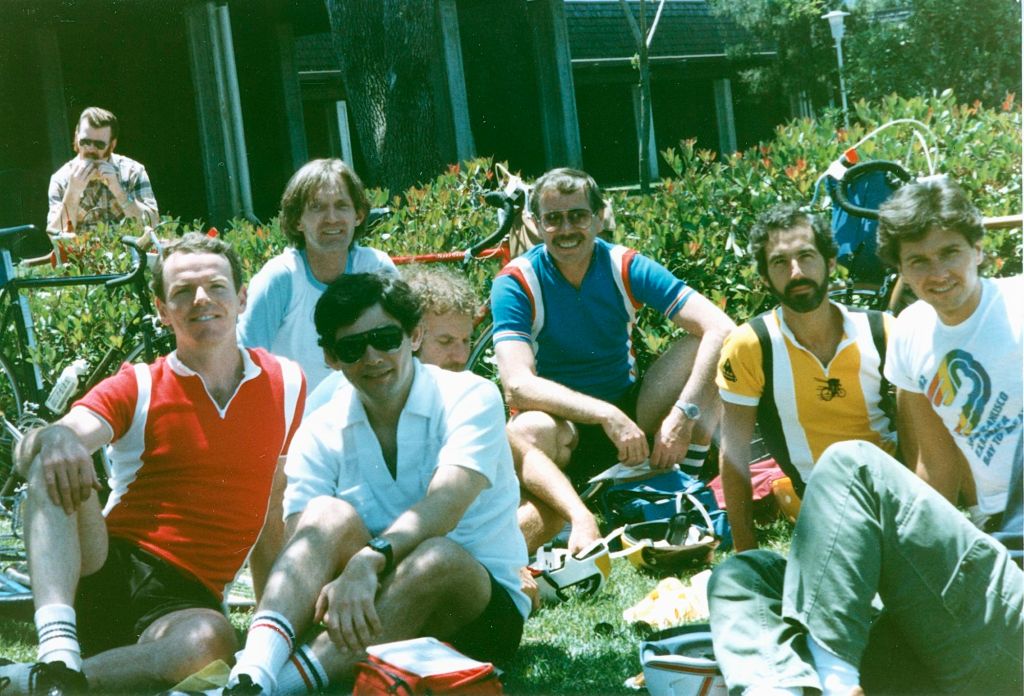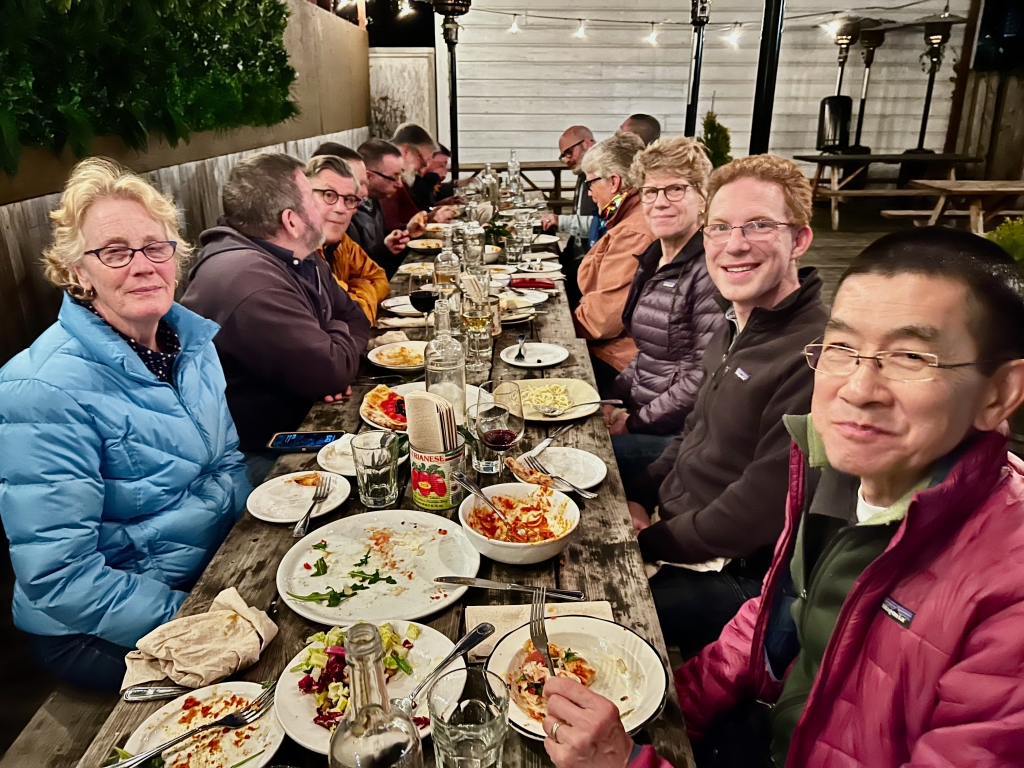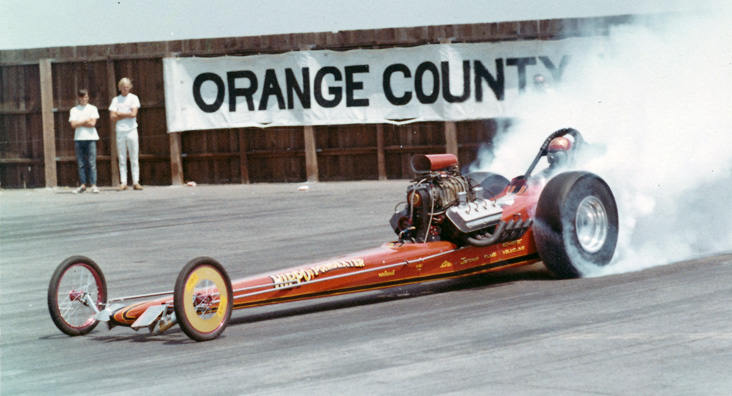It took me an hour to change a tire the other day. Normally this simple task would involve no more than five minutes even working at a slow and meticulous pace, and I wouldn’t have blinked an eye at the task. But I was changing a tubeless tire and all bets are off when it comes to how easy or ridiculous this can turn out. In this case it was ridiculous.
Like a good Boy Scout I was topping off my tubeless tires with sealant after a wet ride. There are a couple of ways you can add sealant to a tire and I did it the easiest way: unscrew the presta valve, and using the short hose that came with the sealant bottle just inject a couple of ounces into the tire. Job done. But since I had been riding in wet weather, I decided to wipe the tires down and check for anything pointy things sticking in the rubber. Finding nothing I thought I was free and clear but, uh-oh, there it was in the rear tire: a bare patch of tire casing. Shit, now I’ve got a friggin’ tire full of sealant that I have to take off!
All tires wear out and if you’re fortunate you get to ride them until all that rubbery goodness has worn away. With tires pushing $90 these days I am loathe to retire a tire until I absolutely have to. This tire was done—with more rain ahead I dared not risk eking out a couple hundred more miles. I learned my lesson: a dozen years ago or so Roger and I went down to ride the Solvang on our tandem. The tires were worn but I thought they’d last through the day. Nope. About 20 miles from the start we started to flat—we had actually worn through the casing so much that the tube deflated. I stuck a new tube and tire boot in there in hopes that would suffice. Barely. I couldn’t pump it up to full pressure without the tire bulging pustulantly. So we limped to the first rest stop where, very luckily, there was a vendor selling new tires. Day saved thanks to the kindness of strangers (and about $40). But I learned my lesson: see casing, better stop!
I had a new tire at hand and could have changed it right away. However I had just filled the damn tire up with about two ounces of new sealant. Unmounting that tire likely would result in a big mess. You’re thinking: so what’s the problem? Stop whining and just replace the tire. It’s gonna cost you less than five minutes of your oh-so precious time.
Um, that is unless it’s a tubeless tire. Replacing a tube in a regular clincher takes about lickety-split. But with tubeless tires you never know because mounting or unmounting tubeless tires can be a protracted struggle. Why is that? Because they are extraordinarily tight. So I walked away from the whole thing unwilling to face another pointless ordeal.
A month later despite having implored the saints nightly my tire did not heal itself. So I got up the courage and time to confront the inevitable and replace the damn tire. It took me an hour and each frustrating minute I was frittering away at this stupidly complicated task was making me angrier and angrier at the direction that bike technology has taken.
I’ve replaced this rear tire before so I knew pretty much what I was up against. Which is why after I discovered the bare patch I waited over a month before resigning myself to fixing it. It’s never as simple as you imagine and it’s definitely never as simple as changing a tubed tire.
Tubeless tires need to mate well with the rim in order for a good seal to form so that air won’t leak out. This isn’t just a nuisance issue of having to pump up your tire every other day; it is a safety issue too because you don’t want your tire to unexpectedly and savagely deflate while you’re riding—like while you’re turning—as this can lead to a crash. Ten years ago I started playing with road tubeless, everything was in the experimental stage (ie. you and I were the guinea pigs). Some tire-rim combinations just didn’t work well because the fit between the two wasn’t precise enough. Rim manufacturers such as Enve then started to evaluate tires on the market and would recommend certain tires that they found would fit well with their rims and warn consumers away from other tires that didn’t work. That’s the last thing tire manufacturers want: a penumbra of doubt—maybe it’ll work or maybe it won’t. Worse, they don’t want a rim manufacturer saying DON’T use their tire!
This led to the European Tyre and Rim Technical Organization (ETRTO), which sets standards for rims and tires, to produce new standards for tubeless rims and tires that literally tightened up the manufacturing variation in rim dimensions and tubeless tire bead diameter so that tires would fit more precisely and not blow off rims and would seal and hold air. You may think this is a good thing—yay! standardization! But it is now more difficult to mount or unmount an ETRTO compliant clincher tire onto an ETRTO compliant rim. Those slacker standards pre-tubeless allowed us to pick and choose rims and tires and they all worked pretty well together. The reason? Even if the dimensions were less than ideal the tube once inflated would force the tire against the rim bead hook and hold it there securely, preventing the tube from blowing out. Without a tube the only thing containing the air inside is a tight fit of rim and tire bead. Any slop results in bleeding air or worse, the tire being able to blow off the rim easily. You would think that making the rim/tire fit tighter would make it easier to inflate road tubeless tires; ironically it may have made it worse. And guess what? Soon all rims and tires will end up complying with the new ETRTO specs because those in the business of making money on bike products want to make sure you can use any of their products in tubeless applications even if you never intend to switch over.
The bottom line is that more often than not it will be a struggle to put a new tire onto a contemporary rim. And the converse is also true: unmounting the tire can become an ordeal. If you have a flat on the road—yes, it does happen with tubeless tires too—you will have double the trouble: unmounting the tire to put in a spare tube and then remounting it (while your hands are covered with slobbery tire sealant) can, nay will, become a time-consuming shitshow. And yes, I have unfortunately experienced this too.
Here’s what I did. Holding the wheel vertically, I let the sealant pool to the bottom. I stuck a tire lever under the bead at the top of the tire and then carefully a second lever near it. This can be difficult with regular clinchers and it’s usually worse with ETRTO compliant tires and rims. Prying a tight bead off with short, flexible tire levers can be nearly impossible—they don’t have much leverage and they bend so much that you think they’re going to snap in two. The trick was not to do it violently despite the difficulty because then sealant might go flying especially if you then drop the wheel. Putting just one lever in wouldn’t have been any good—the bead is so tight that I wouldn’t be able to stick a second in, so I had to try to lever the bead off with two right away. The problem is that it is harder to pry a bead off in two places at once. In the past I’ve done this and it’s been a struggle. This time was no different and with forceful efforts I finally got part of the bead off the rim—without spilling any sealant! A flick of one lever slowly around the perimeter of the bead and I got the first bead off.
Thanks to Jeff Mishler for a tip I had the perfect tool for removing the sealant: a Park TSI-1. It’s basically a big syringe that can suck up all the sealant so I don’t have to spill it. This also conserved the sealant and I could reinject it into the new tire. I did this before removing the second bead in order not to end up with sealant all over the floor (and me).
The second bead came off more easily. The next step was to clean the rim and inspect it for any problems. What sort of problems? Well, like your rim tape coming loose. Almost all rims have spoke holes and these are covered with a special rim tape so that the rim cavity is completely sealed and can contain air at pressure. Tape can migrate and the air pressure can force sealant around the edges compromising the seal. By the way, did you know that the ammonia in some sealants can corrode aluminum alloy spoke nipples? (I’m looking at you, Stan’s!) So you don’t want there to be any leakage into those spoke holes.
I thought at this point the hardest part was over. I was wrong. With a tubed clincher inflating a tire is simple: Just pump. The tube inflates and pushes the tire against the rim wall until it catches the bead hook. Voila! You’re done! But there is no tube with tubeless tires. So whether or not a tubeless tire “just inflates” when you pump is a big question mark. In my experience the answer is “mostly not.” The problem is that most floor pumps don’t inject air fast enough to push the tire out against the rim wall. Since there is no seal between the tire and rim, air just leaks out between the two. In theory a tighter, more precise fit should make it easier to inflate but that isn’t always the case.
After futilely pumping as fast as I could and getting nowhere, I had to get out the (literally) “heavy machinery”: an air compressor. As I’ve mentioned before, an air compressor is a handy-dandy tool for running a nail gun, inflating your car tires, and for blowing compressed air when you want to clean up an area. It’s also very useful for inflating tubeless tires. Unfortunately they are bulky and quite heavy; if you don’t have a workshop, it’s a bit much to have one around. (Instead you can invest in one of the newer floor pumps that have an air reservoir that you can pump up to 160 lbs. or so pressure. Opening a valve releases the air quickly into your tire and hopefully gets it to seat against the rim and seal.) After priming the air compressor I tried inflating the tire. The goal wasn’t to fully inflate the tire but rather just to force the beads against the rim wall and seal. Since I had removed the presta valve core, there was no way the tire could remain at pressure anyway. Once I had the beads seated, I would add sealant, screw in the presta valve core, and then inflate to riding pressure with the floor pump. That was the plan anyway.
The tire inflated and pushed against the rim walls. Most tires these days make telltale ‘snap’ sounds when the bead pops into place. With old-school tires, apparently the beads were sufficiently loose that you rarely experienced that. The ‘snap’ is the bead popping out of the wheel well onto the rim shelf; in addition some rims designed for tubeless tires have a little lip that holds the rim bead and the bead has to pop over that lip. I heard the snaps—there’s usually more than one as the bead snaps into place in different locations around the rim. But once I stopped inflating, the beads popped right off the rim wall and the tire deflated much to my dismay. I tried inflating longer and to higher pressures. (But I wasn’t going to go beyond 85 psi because a tire of this size on a wide rim is not designed to hold the kind of pressure an old school clincher rim can. The latter are narrower—about 17 mm—and the tires were usually no wider than 25 mm (if that). In this case I had moderately wide rims (21 mm) and a 30 mm wide tire. With the bigger volume the total pressure the air exerts against the rim wall is much greater even at a “lower” pressure such as 85 psi.) I tried more than a half dozen times and the ending was the same: the tire beads would pop against the rim walls but after deflating they would pop off. I was getting very frustrated.
The next thing I tried was inflating the tire to 85 psi and then trying to quickly insert the presta valve core so the beads wouldn’t pop off. It didn’t work. I wasn’t fast enough and the air blasting out of the valve made it difficult to insert the core. I tried this three or four times.
In the past I had used the air compressor and it worked perfectly. But it was usually when there had been sealant in the tire. I reconsidered my decision not to put in sealant before seating the beads. The tradeoff would be the sealant might help the tire make a better seal with the rim right away; but if I weren’t careful, I was likely to have sealant all over the place. I had run out of ideas and inflating a dry tire just wasn’t working. Of course you can’t slosh sealant around in an unmounted tire but I was hoping the blast of air would help spread it around enough. Once the sealant was in the tire, the blast of air snapped the beads into place long enough for me to insert the presta valve and attach a regular floor pump to get the tire up to 80 psi. It worked! The beads stayed in place long enough for me to screw in the core and pump the tire up. I then quickly rotated the wheel every which way in order to spread sealant thoroughly around the tire and then let it sit. Checking the rim I could see sealant had seeped out at a couple locations indicating the seal was not perfect. But the sealant would take care of that. I was done.
I let the wheel sit overnight and the next day it was still at pressure. So I deflated it to its usual pressure, 58 psi. I rode it two days in a row and it has worked flawlessly. Certainly I was relieved that all that effort and time eventually paid off. But really, spending an hour to replace a tire?? That’s absurd. As much as I enjoy the benefit of tubeless tires—fewer flats on the road—it is not a movement overall towards user-friendliness and simplicity. The cynical part of me sees this as indifference by manufacturers and product designers. They want to push the field in this direction and make some money with a new! better! product. The problem is that it is not a better product—it’s a different product—and overpromising is just so tiresome.
Being able to do basic repair and maintenance on your bike is a dying value and product designers seem intent on accelerating that trend. Stupid ideas like tubeless tires that are a chore to inflate are pushing recreational cycling in the direction that automobiles went: all the technology is turning bikes into just one big black box and when something doesn’t work, you have to haul it to the shop. I can completely understand a regular Joe/Josephine Cyclist, eyes glazing over at the prospect of needing an air compressor and hour of time to literally wrestle a tire off and on a rim, just saying, ‘fuck it, I’ll take it to Mike’s Bikes and let them deal with it.’ Oh, and that will be $60, please, for the labor. If you wear out tires infrequently, maybe that’s a cost/time-effective solution for you.
Am I saying that road tubeless tires are a waste of time and money? No. But to embrace them is a choice you make hopefully after understanding what that choice entails. When I don’t flat in the rain, I love tubeless tires. So there you go: one convenience is traded off for an inconvenience.
There is one thing I could have done to avoid this shitshow. I could have mounted the new tire on a spare rim with a tube, inflated it to pressure, and let it sit for a few weeks. That time allows the tire and its beads to stretch out a bit so that it would be easier to mount and for the beads to pop into place. Just make sure you have a spare rim. This is an interesting throwback to the days of yore when we rode sewup tires. A new sewup was nearly impossible to stretch onto a rim, which was inevitably covered with sticky sewup tire glue. A mess was unavoidable. (So, lots of acetone afterwards!) We learned to stretch new sewups onto a clean, spare rim and leave them for a couple of weeks so they’d be easier to mount when we actually needed to replace a tire. They were manufactured tight because you didn’t want a loose tire that wouldn’t line up straight and would be too easily decoupled from the rim in a hard turn. And here we are again. What’s old is new!
Apparently I’m not the only home mechanic who’s frustrated with road tubeless tires: https://velo.outsideonline.com/gear/technical-faq-tubeless-troubles/
And if you want to see a “pro” mechanic install a tire, you can watch him suffer through a similar debacle. Note that the video is edited down so that the actual amount of time he spent is much more than what you see (12 minutes): https://www.youtube.com/watch?app=desktop&v=fgEzCJT7yEw
Now, why is it you’re interested in converting to tubeless tires?











